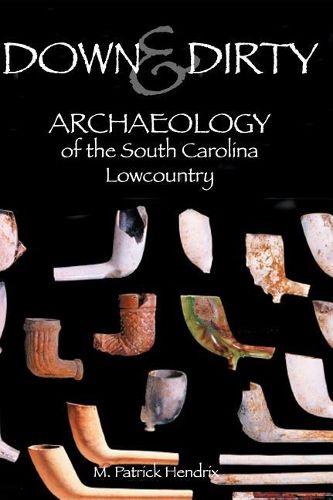Readings Newsletter
Become a Readings Member to make your shopping experience even easier.
Sign in or sign up for free!
You’re not far away from qualifying for FREE standard shipping within Australia
You’ve qualified for FREE standard shipping within Australia
The cart is loading…






With this clever new look at Lowcountry history M. Patrick Hendrix demystifies archaeology and takes readers on a fast-paced romp through more than 50,000 years. Drawing on the results of archaeological studies at a wide variety of sites, Hendrix discusses key finds and sets them in context with an accessible, entertaining style. The discovery of a mineralized mastodon bone from Edisto Island offers a glimpse into the Paleoindian period; the brick and earthen fortifications that protected Colonial Charleston make clear how vulnerable early Colonists felt. Slave cabins, colonoware pottery, and the remains of foods found on the Lynch Plantation in Christ Church Parish demonstrate the continuation of West African customs that was seen on many early rice plantations; ceramics found at the Miles Brewton house illustrate the extreme wealth enjoyed by some eighteenth-century Charlestonians. Early work on the H.L.Hunley indicated immediately the technological sophistication of the vessel; recent work on Morris Island underscores the tremendous historic significance of this barrier island and has contributed to recognition that it should be protected. With a missionary zeal to preserve the integrity of sites during the explosive growth of the twenty-first century, Hendrix is sure to inspire in readers his conviction that knowledge of our past illuminates our future.
$9.00 standard shipping within Australia
FREE standard shipping within Australia for orders over $100.00
Express & International shipping calculated at checkout
With this clever new look at Lowcountry history M. Patrick Hendrix demystifies archaeology and takes readers on a fast-paced romp through more than 50,000 years. Drawing on the results of archaeological studies at a wide variety of sites, Hendrix discusses key finds and sets them in context with an accessible, entertaining style. The discovery of a mineralized mastodon bone from Edisto Island offers a glimpse into the Paleoindian period; the brick and earthen fortifications that protected Colonial Charleston make clear how vulnerable early Colonists felt. Slave cabins, colonoware pottery, and the remains of foods found on the Lynch Plantation in Christ Church Parish demonstrate the continuation of West African customs that was seen on many early rice plantations; ceramics found at the Miles Brewton house illustrate the extreme wealth enjoyed by some eighteenth-century Charlestonians. Early work on the H.L.Hunley indicated immediately the technological sophistication of the vessel; recent work on Morris Island underscores the tremendous historic significance of this barrier island and has contributed to recognition that it should be protected. With a missionary zeal to preserve the integrity of sites during the explosive growth of the twenty-first century, Hendrix is sure to inspire in readers his conviction that knowledge of our past illuminates our future.